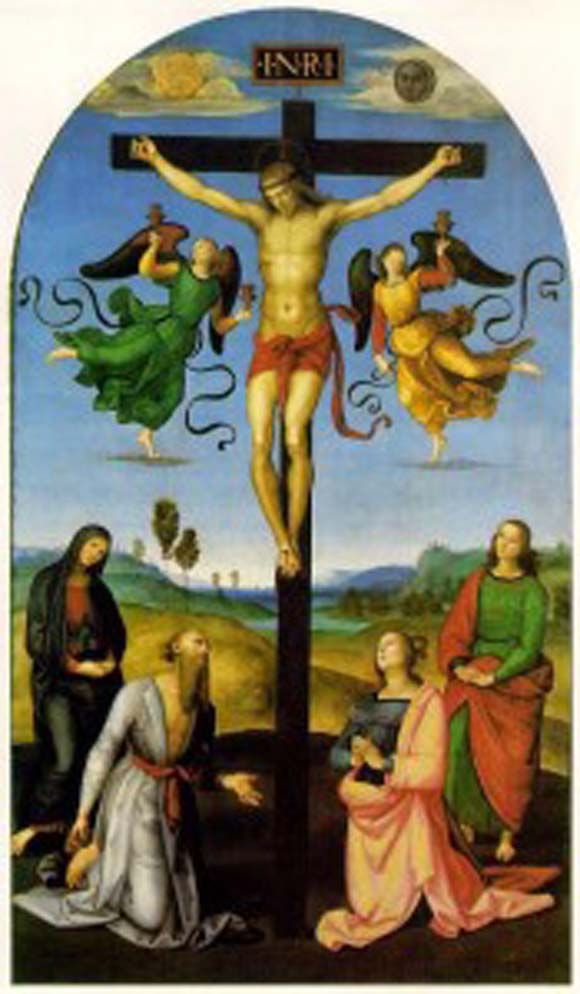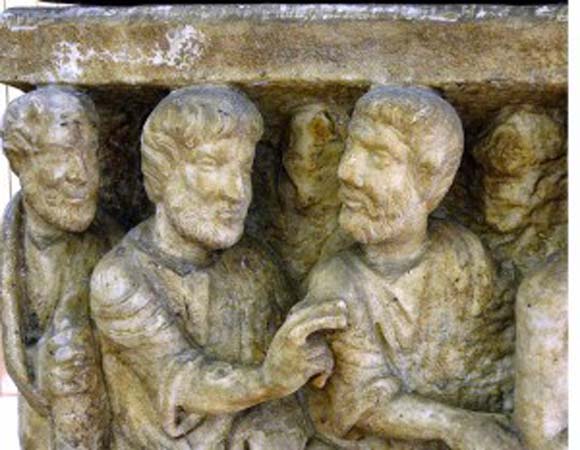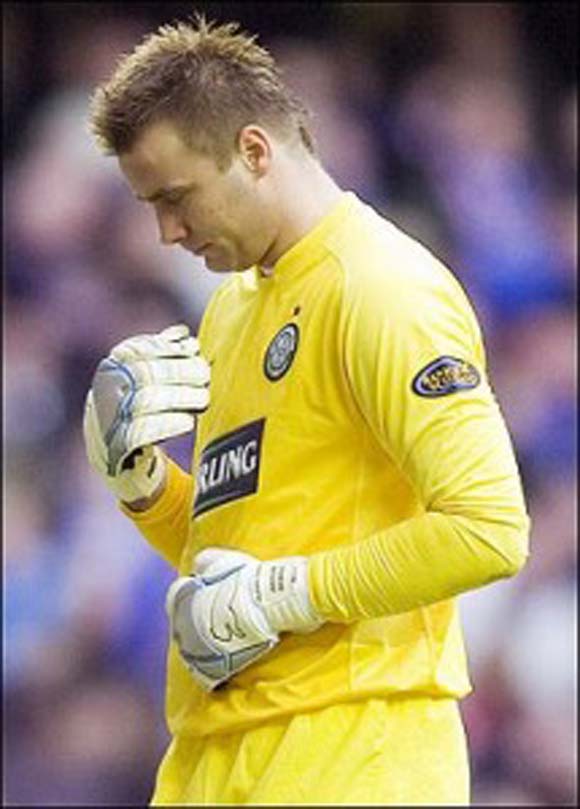
Popular Piety: The Sign of the Cross
3.33k
 |
| ‘My power is perfected in weakness’ |
The sign of the cross is the sign of our faith. It is faith in the cross of Christ that defines us as Christians; through it we receive the grace that saves. Without the cross – and the resurrection that revealed Christ’s death to be his triumph over death itself – our faith would be vain and we would still be in our sins (1 Cor. 15:17). Christ’s death is the ultimate sign that he was truly incarnate: he truly became man, and so he was truly able to die. Through his incarnate weakness, he could be our friend: for he could love us to the end (Jn. 13:1, 15:13).
The cross is thus the sign of God’s love for humanity. It is a powerful sign, whether being used to cast out demons or to assure victory (in hoc signo) to the Emperor Constantine at the Milvian Bridge. Yet this is only because it boasts of Christ’s weakness. Christ says: ‘My grace is sufficient for you, for my power is perfected in weakness’ (2 Cor. 12:9). So, following St Paul (1 Cor. 1:23), the crucified Christ is a ‘stumbling block’ or ‘foolishness’ to us until we accept that God’s infinite love means that he laid down his life for us, as his friends.
 |
|
Filipino Catholics in a queue for American visas in the comedy film ‘La Visa Loca’ |
The sign of the cross is many things: a pious gesture, a prayer, a blessing, a physical expression of Trinitarian faith. It is egalitarian in its simplicity, deep in its theology, and universal (truly ‘catholic’) in its relevance. We use it to start and end our prayers, especially the Mass; to bless things; and indeed in every sacramental act. There are cultural variations, of course, since there are many ways to express the richness of Trinitarian theology. In the Eastern churches it goes right to left, using three fingers (to represent the Trinity), leaving the other two to symbolise the two natures of Christ. There are also smaller signs of the cross: we use our thumb at the gospel, for instance, to trace the cross over our forehead, lips, and breast. It can be a bold and deliberate gesture, or a surreptitious act of faith in dire circumstances. And are there many public acts of Christian witness more striking than being marked with the cross on one’s forehead on Ash Wednesday?
 |
| The ‘Dogmatic Sarcophagus’ (c. 320) showing the Blessed Trinity |
The popular piety of this act is very ancient indeed. Tertullian (born c. 160 AD) noted: “In all our travels and movements, in all our coming in and going out, in putting of our shoes, at the bath, at the table, in lighting our candles, in lying down, in sitting down, whatever employment occupieth us, we mark our foreheads with the sign of the cross” (De cor. Mil., iii). Ancient Christians associated the sign with certain Scriptural passages, including Ezekiel’s instruction to ‘mark their brows with a cross’, i.e. the letter tau (Ez. 9:4) and the ‘seal on the foreheads of those who serve our God’ (Rev. 7:3).
But it is no less important today. Catholic sportsmen often make the sign of the cross on the pitch, sometimes contentiously! Some Catholics bless every loaf of bread with a small cross as an act of grace. Parents putting their children to bed sign the cross on their forehead. Many also make the sign every time they pass a church. I was impressed when I once saw a whole bus-full of people in Romania do this repeatedly along an urban route, and I’ve also seen it done by students walking past Blackfriars. In all these ways, we can express outwardly our Trinitarian faith, receive inwardly the grace which God gives us through faith, and in everything give the glory to our crucified Lord.
In the name of the Father, and of the Son, and of the Holy Spirit. Amen.



